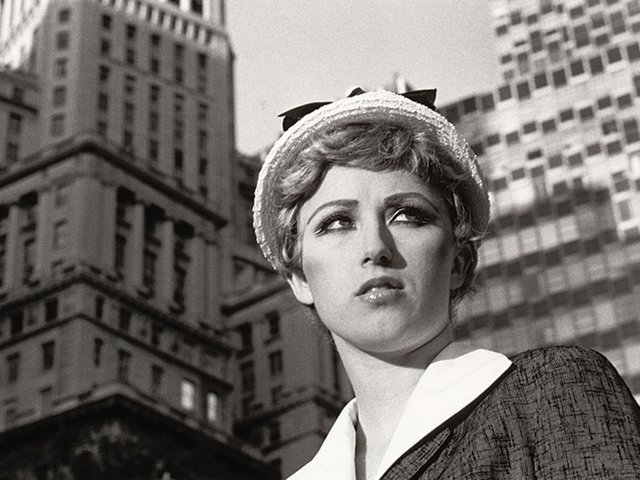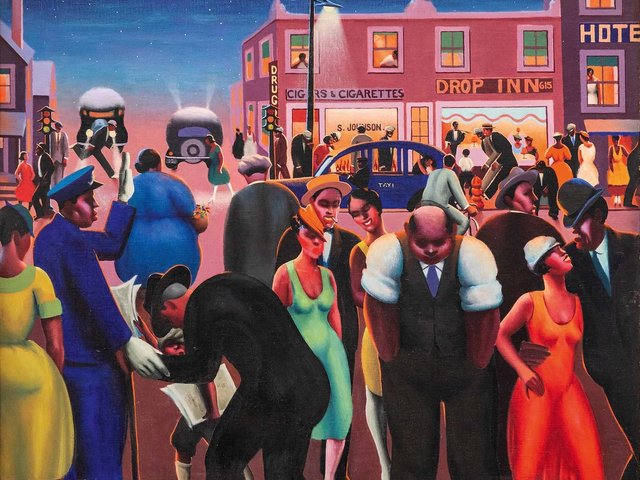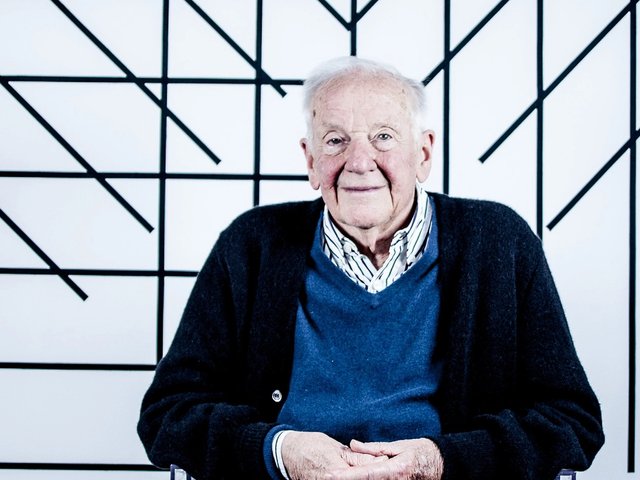Exhibitions devoted to work by François Morellet are taking place in three galleries to mark the French artist’s 90th birthday. Abstract geometric canvases from the 1960s and 1970s are on display at the Mayor Gallery in London and at Dan Galeria in São Paulo (until 27 May), while new and recent neon installations and paintings are at Annely Juda Fine Art in London (until 24 June).
Morellet, whose career spans more than six decades, is increasingly recognised for his contribution to Modern art. When the Pompidou Centre in Paris redisplayed its Modern collection a year ago, its director Bernard Blistène placed canvases by Morellet alongside works by Ellsworth Kelly—who died last December—in their own room. The two artists were friends, having met in Paris in the 1950s, and “both of them were part of an early articulation of Minimalism and Conceptualism”, explains Blistène. “It made sense to build a room which is a dialogue between the two.” It is part of the museum’s mission to “reframe Modernism”, he adds. “We need to fix a few things and reconsider what we did not do before. The history of art is never set in stone.”
Shining a light
Part of this process is the focus on older French artists who are not as well known as their American contemporaries. “In France, we don’t always do enough to celebrate our own,” Blistène says. He is now organising an exhibition of work by the French sculptor César (1921-98), which will open at the Pompidou at the end of next year.
Commercial galleries too are widening the parameters of Modernism and its movements, often focusing on artists who have been working steadily for more than half a century, but who are not as well known as the galleries argue they should be. For some French artists in their 80s and 90s, this has led to the international recognition that has eluded them for 50 years.
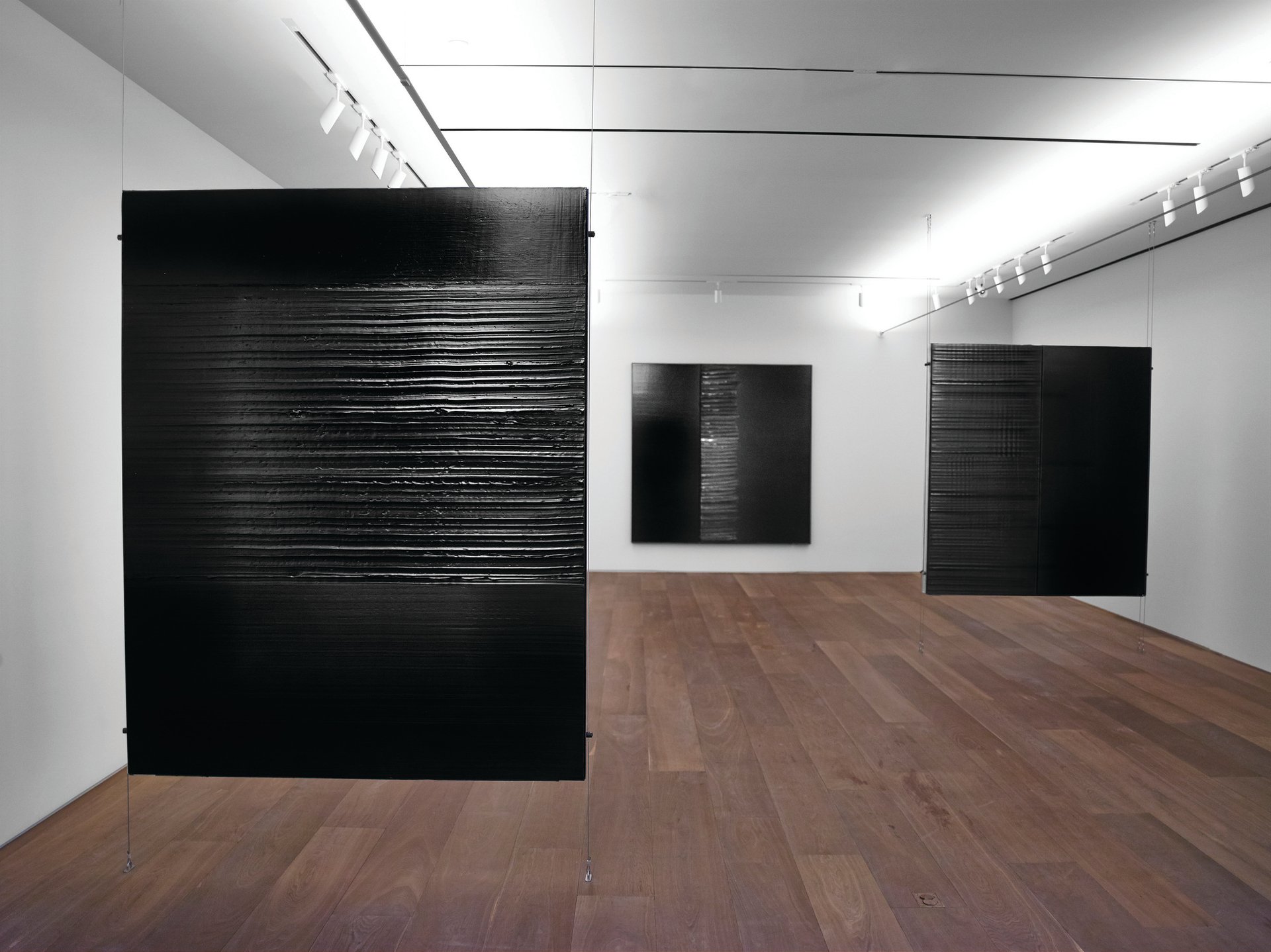
Take Pierre Soulages. In France, the 96-year-old painter is a superstar. His 2009 exhibition at the Pompidou Centre attracted more than 500,000 visitors—the museum’s then highest number ever for a living artist—and in 2014 he was honoured with his own museum in Aveyron, in the south of the country. But when Emmanuel Perrotin and Dominique Lévy organised a joint exhibition of old and new work by Soulages in New York two years ago, it was the first solo display of the artist’s work in the US for around ten years.
In the 1950s and 1960s, Soulages’s primary dealer, Sam Kootz, an early champion of Abstract Expressionism, was based in New York and the French artist was given eight shows over 12 years. But after the Kootz Gallery closed in 1966, Soulages’s reputation fell far behind that of his American contemporaries, and his work was shown in the US only sporadically.
Relatively inexpensive
One result of this lack of international attention is that prices for key post-war French artists are far lower than those for their transatlantic counterparts. “Compared to the work of the Americans, these paintings are not expensive,” says the British dealer James Mayor, who has set prices for the 15 Morellet canvases he is currently offering at $25,000 to $250,000. (At Annely Juda Fine Art, prices for Morellet range from £46,500 to £65,000 for the paintings and £46,500 to £112,000 for the neon installations.) In other words, you can buy a first-rate Morellet for far less than even a fourth-rate work by his American Modern counterpart, Ellsworth Kelly. The highest auction price for a work by Morellet is €432,750, for Kelly, it is $5.2m. “This is one important reason that we’re seeing a resurgence of interest in older European artists,” Mayor says.
“In 1963 my neon works were provocative, vulgar and unsaleable—I had to wait 20 years to sell my first one. Today they are stylish, expensive and very trendy,” notes Morellet in an interview with Hans Ulrich Obrist, the artistic director of the Serpentine Gallery in London, which is included in Mayor Gallery’s catalogue.
Obrist argues that the increased attention given to pioneering French artists such as Morellet underlines the complex nature of the art world. In the 1950s and 1960s, when focus had shifted to New York, Paris continued to be a crucial city for art, he says. “There has always been a polyphony of art centres; it has always been a fiction that there is or was only one centre at any given time.”
Young admirers
It is not just museums and commercial galleries that are shining a light on older artists; younger artists are playing an important part in this process of rediscovery too. When Kamel Mennour, Morellet’s dealer in France, organised a show of the artist’s work in his Paris gallery in 2009, he also staged a concurrent exhibition of work by the French artist Camille Henrot, then aged 31. “She was extremely flattered and happy for her work to be seen near his,” Mennour recalls. “Young artists today are incredibly curious about the work of their predecessors, unlike artists of Morellet’s own generation, who rejected the past.”
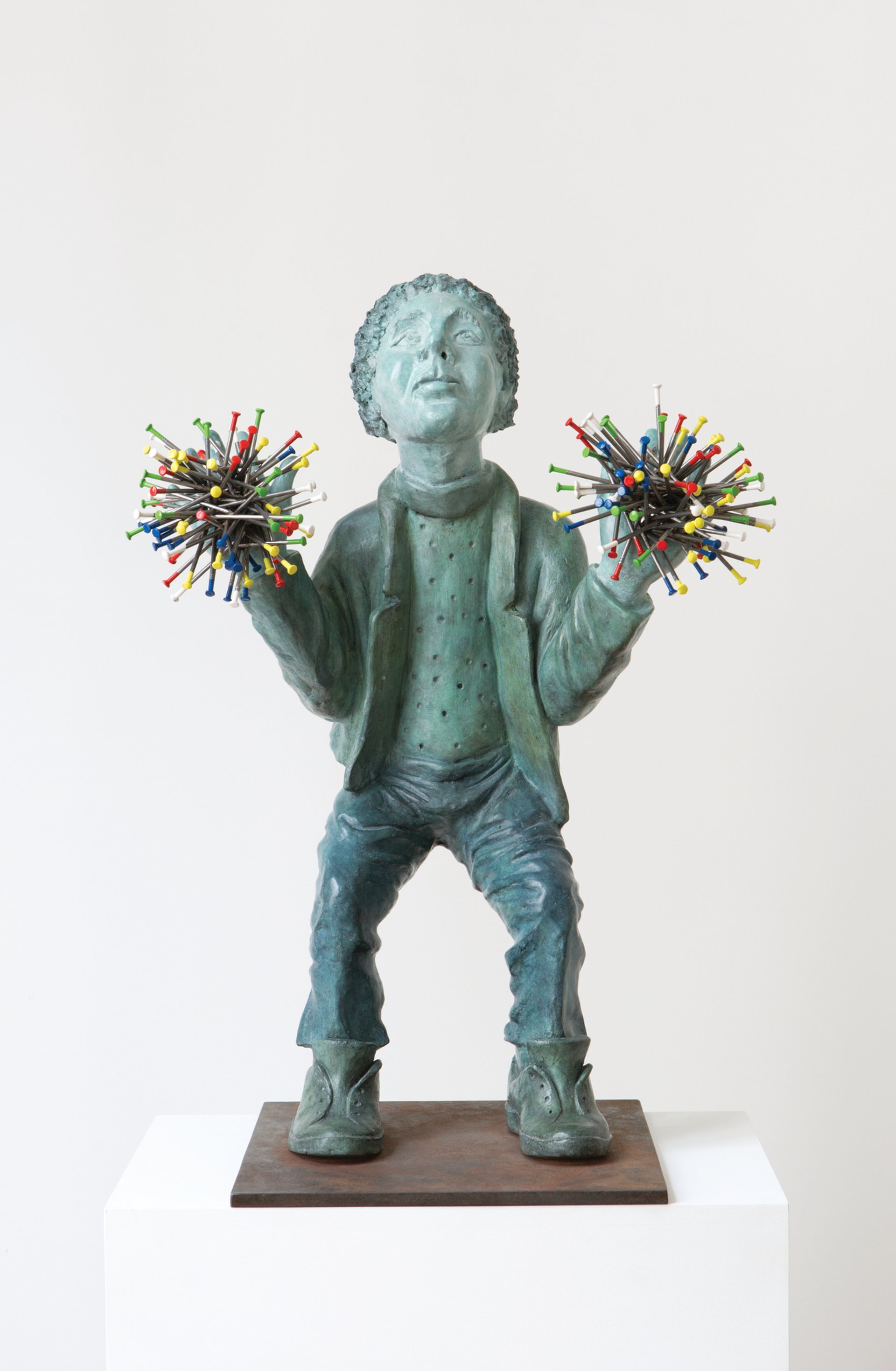
One reason for this is the rise of the internet, which provides instant access to a world of art history, Mennour adds. He also represents the French Pop artist Martial Raysse, now aged 80, whose garishly coloured canvases and neon installations were rediscovered by an international audience following exhibitions at the Pompidou in 2014 and at the Palazzo Grassi in Venice in 2015.
“Youth is not synonymous with creativity and relevance,” says Valentine Blondel, an associate director at Galerie Perrotin in New York. “Some of the oldest artists have the same or more inventiveness as the youngest.”


